
"Good quality briquette at a great price. What more do you need".
Eric
- Hartlepool Yard Customer

Stove: Clock Blithfield 5 Compact (5kw)
Despite holding a long service with the company, I am a novice to life with a stove, and have only recently had one installed. I love it, and wish I had done it sooner. I am an occasional burner, lighting it 3 to 4 times per week on evenings when its cold outside. There is nothing quite like getting it right, and the heating benefits that having a stove brings to the house. Not just in terms of warmth, but in the atmosphere and ambiance it brings. I first started off using our kiln dried logs. These are great and are very easy to light and control. Logs are a good place to start. However, they don't offer the heat output of our briquettes and whereas briquettes will last all night on a fire, logs burn out quickly. I wanted something that would give me great heat and last all night long. I may not need quite a 'sauna' level, but I do like 'shorts and T-shirt' level.
How I Light & Control My Stove:
I think I saw this technique on an episode of Thomas the Tank Engine! The one where Henry had a new firebox installed and they used good coal to get him to be as fast and strong as Gordon! Looking for a long lasting high heat output burn, I use our Newburn smokeless briquettes. I place a line of briquettes (4 briquettes) at the back of the stove to build almost a small wall. I place a good handful of kindling on the grate and near my 'briquette wall'. I use the brown square type firelighters (the type you can find in the supermarket and look a bit like a chocolate bar) and place about 6 to 8 pieces of them randomly around the kindling (some in the middle, some towards the edges, and some near the back). I then place two good handfulls of kindling on top. On top of the kindling I place 10 briquettes. (14 briquettes in total so far). I turn all the air vents fully open and light the firelighters with one of those long clicky button hand held lighters (the kind you can usually find at a homeware section in supermarkets). I keep the door of my sove slightly open for the first 5 minutes while the fire takes. Once I am confident it has taken, I close the stove door. After about 30 to 40 minutes the fire is well on its way. The kindling has mostly burnt, the briquettes are starting to glow red and there is a bright yellow flame. At this point, I begin to load more briquettes into the stove and place about 10 more briquettes on. (24 briquettes in total so far). I keep the air controls fully open for a further 20 minutes. Once I am confident that everything is as it should be, I begin to turn the air controls down. I set my primary airflow (the bottom draft) to about 50% and the secondary airflow to a similar level. The colour of the fire changes from bright yellow, to a lovely strong glowing yellow and red. This whole process so far gives me 4 to 5 hours worth of excellent heat output.
I have a medium sized 'L' shape room that goes from kitchen, dining room, sitting area at one end of the 'L' to a living room at the other end. The stove is in the corner of the 'L' giving heat to all areas. If say I light the fire at 6pm and want to last until after midnight, I will put another 10 briquettes on. (34 briquettes in total so far). If I wanted to keep the fire running overnight until morning, I would place another 6 to 10 briquettes on before going to bed and close the airflow down. I would close the primary airflow to about 30% and do the same with the secondary airflow.
In Summary:
In my setup, I find about 34 briquettes will heat my rooms to 'shorts and t-shirt' level for a good 6 hours. The fire actually continues longer but its starts to die down (it probably would go out at sometime between 2 to 3 hours later - when I check my stove in the morning the fire has gone out but the top is still warm to the touch). If I am seeking to have my stove burning overnight so its still going in the morning, I would add another 6 to 10 briquettes on and run the fire at near its lowest setting. Total briquettes used in this scenario is approximately 40 to 44.
One point I have noticed, is that when everything is running correctly, heat level, airflow etc and I have balanced it just right; how clean and efficient the stove burns. If I run everything correctly, I know about it as the front glass of the stove and back and side firebricks are clean.
As a beginner to life with a stove, im always on the lookout for new and different ways to get the best results and enjoy hearing about trying other peoples methods.
Stove: Stanley Ashford (8kw)
Im from an era that has never known life without an open fire or stove. From being born all the way to now (more years than I care to think about or like to remember) I have never lived in a house without one. Over the years I think I must have burned everything from bed posts, to old shoes and sheets. Things are different now but back in the day the fire was the centerpiece of the home, we would dry our washing infront of it, take baths beside it, boil the kettle on it and cook our toast on it. I am a veteran at M&G Solid Fuels and have spent most of my working life and career there involved in all aspects of the company. I am often used as the chief testing officer. In the early days we would burn our columbian coal, petcoke, coke blend ('supercoke'), anthracite and invite everyone around to test the quality of the coal. It wasnt as scientific back then but we knew good coal when we saw it. Part of the secret was that we had a labrador that loved the fire. It would sit inches away from it all night getting warm. We often wondered if his blood was actually boiling. The key was to find a coal that was hot enought to make the dog move away from the fire. If he got so hot that he decided to move away to cool down, we knew we had a great product. Im sure on some evenings he was close to cooking himself medium rare! ... These days I burn both Burnwell Blend Plus and Newburn. Sadly the dog is no longer with us, but I can still identify a good product when I see one. Im pretty sure that it would approve of our briquettes.
How I Light & Control My Stove:
We have central heating in the house, but our stove is the primary source of heating during late autumn / winter. I run it non stop 24 hours a day at a low level and this provides us with a comfortable ambient temperature throughout the house. On colder days to maintain the temerpature, I will turn up the heat settings on the stove. There is nothing too technical about running the stove. I chose what I considered to be a good quality stove from a known brand and in a style that I liked. A good quality multifuel stove is pretty much indestructable with minimum amount of maintenance. Over the many years of use, I may ocasionally need to renew the glass, the firebricks and the grate, but a stove like the one I have now when run properly would pretty much last my whole life. My lighting technique is similar to David's (I taught him everything he knows). The hardest part of running the stove is the initial lighting. Once you have this locked down, the running of the stove is easy. My trick is to not let it go out and keep it topped up. Doing it this way, you should rarely need to drive your stove hard. My house is never a 'sauna' or 'shorts and t-shirt', but when people come to visit on cold or mild days they often coment how 'lovely and comfortable the temperature is' in the house. Probably a good way to exlain the joy and experience of getting your stove and room temperature right is probably similar to imagining hitting a golf ball perfectly, getting a strike in bowling, scoring a goal at Wembley or driving from A to B and hitting green lights all the way! Well maybe not that level, but it is a good feeling.
Trying to Keep Warm This Winter?
Whats The Best Briquette?
People all over the country love both our
Burnwell Blend™ and Newburn™ briquettes.
Below are some testimonials from our customers


Newburn™
Everybody Loves Burnwell Blend, Burnwell Blend PLUS+ and Newburn. Our Briquettes are manufactured exclusively by us in Redcar, UK and are available nationally from all good coal resellers. Our briquettes are premium briquettes manufactured with high quality materials, and are designed to give maximum heat output, while being long lasting and low ash.
One of our favorite comments (October 2023) from a customer is:
"Excellent product - (Burnwell Blend PLUS). My house is a sauna for £2.50 per night. Cheers".
We are also often asked by customers:
"I have a 5kw stove and wanted to know how much to burn at a time".
All makes and brands of stoves and fires are different and will be heating different room sizes to different desired temperatures at different times of the year. Our briquettes are designed to work on both open and closed appliances and multifuel stoves. Burnwell Blend PLUS+ and Newburn are HETAS Approved, "Ready to Burn" Approved, DEFRA Approved, authorised smokeless briquettes. Here we would like to share our own hints, tips and advice to how we use Burnwell Blend PLUS+ and Newburn on our own stoves at home.
Neil

David
John


John





Stove: Vega (10kw)
I have had my stove installed for over 6 years now. I grew up in a house that had open fires and stoves and have been surrounded by them all my life. No matter where I go these days, if there is a lit stove or fire, it always brings back such warm feelings and memories of the house from my childhood. These days, (feelings and memories aside) I think that using a stove is the best and cheapest way to heat the house. We also have a number of pets that are extremely 'nesh' and insist on a warm house. They probably cost me a small fortune in heating, but they are worth it. I went for a 10kw stove which we affectionately call 'the furnace'. Everyone in the house loves it but its often difficult to get near to as all the pets are often crowded around it. It's probably a good thing that it throws out a lot of heat all around the house!
How I Light & Control My Stove:
I try to utilize my stove all winter long and once lit, not let it go out. I find this is the best way to heat my house. I generally start my fire in October and keep it on until March / April. I place 2 firelighters (I use the ones from Costco) at the bottom on top of the grate, I throw on a large handful of kindling and light the fire. Once the kindling is well away, I place on 2 shovel full of briquettes. (Each shovel full is approximately 15 briquettes). Air flows are fully open. After about an hour, once im satisfied everything is fully away, I put on a further 2 shovels of briquettes and turn both air flows down as far as they will go. This will last all night until the following morning and gives me a good 12 to 14 hours worth of bruning and heats the whole house. In the morning, I add more briquettes on to keep the stove going throughout the day. I then repeat the process in the evening.
In Summary:
I use about 80 to 90 briquettes per 24 hour period to heat my whole house. This keeps my house between 22 and 24 degrees (its hotter in rooms nearer the stove and cooler in the rooms furthest away). I find that keeping my stove constantly running is the best way to keep my house warm as the constant temperature means I can run the stove at its lowest setting while maintaining whole house ambient temperature. I use a combination of Burnwell Blend Plus and Newburn briquettes.
Stove: Douvre (5kw)
I am relatively new to M&G Solid Fuels, but have been living the stove life now for over 20 years. One of the first things we did when we moved house was to have a stove installed. Even before life at M&G Solid Fuels, it is hard to remember a time before having a stove. It's just become second nature, and running it is part of the families routine. I am semi-technical, I don't always pay attention to how I light the stove, I seem to go on autopilot for this, but I do pay a lot of attention to how our briquettes burn. At M&G Solid Fuels, we have regular 3rd part independent laboratory tests of our briquettes which analyse heat output, reactivity, ash, sulphur, moisture and smoke emissions which forms part of our quality control systems, but we also use our briquettes ourselves. I like to back up our lab results with real world testing to make sure the certified quality results we recieve on paper also translates to our customers own experience when using our briquettes in their own home. It's more of a personal approach and I like to think that if we are not happy with performance ourselves, then how can we expect our customers to be. This philosophy has lead me to test pretty much every production run we do of Burnwell Blend Plus and Newburn. This keeps us constantly informed of the quality of our briquettes where we can hand on heart say we have put our all into making the best briquettes we know how to make. An unintended downside consequence of this is that my house is often roasting!
How I Light & Control My Stove:
From memory, my process is pretty simple. It seems to differ slightly to my colleages. I place briquettes at the bottom of the grate first. I then place 3 to 4 of the big firelighters (Costco ones) and nestle them into the briquettes. I place a good handful of kindling on top and light the fire lighters. In the beginning, I have all the air vents set to fully open and for the first few minutes I keep the stove door slightly open to let more air inside the firebox (this helps the fire take). Once I am satisfied with how the fire is going, I close the stove door and keep the air vents fully open for about 1 hour. By this time the kindling has burned away and the briquettes are well on their way to reaching their peak burning stage. When this happens, I add more briquettes to the fire, give it another 20 minutes to make sure and then close the airvents down to my desired level. I dont have a massive stove and I keep adding more briquettes as and when needed. I use the stove to heat the whole house, its not located in our primary sitting room, but we leave the doors open to the room where it is in and let the heat spread throughout the house. If im testing our briquettes for maximum heat, I will drive the stove hard, but most of the time I find this undesirable. It gets to a stage where we have to open the windows to cool down. I find that a long steady burn over time is much more comfortable and economical.
There are an amazing variety of wonderful stoves from stove manufacturers available to buy, the above are just our own examples. Our briquette users around the country have many different types of fires and stoves and we always love to hear how they use our briquettes and how they burn on their appliance. Please feel free to drop us an email or phone call to let us know how you burn our briquettes, which stove you use and your experiences. Its always great to hear from you.











Our Test Stove

Stove: ????????????
Nobody seems to remember when or where this came from, or what make it is. It seems to have mythical level burning abilities. This is our on site test stove. It may have even came from Valhalla - we wouldnt be surprised! It works every time, puts out phenomenal heat, is easy to light, run, use and burns absolutely anything. It even has its own inbuilt pie warming compartment - we are not exactly sure why, but its extremely useful.
Burnwell Blend PLUS+
"We have tried most other smokeless fuels on the market. Newburn is the best we have tried. It burns for a long period of time with an attractive price tag".
Ms Gent
- Devon
"Superb briquette, chucks the heat out, burns right throught to the core - no waste".
Mr.F
- Hartlepool Yard Customer
"We have been buying Burnwell Blend every year for the past 4 years. Its the best way to keep warm in winter".
Anonymous
- Hartlepool Yard Customer
"Recently purchased Burnwell Blend briquettes from M&G Solid Fuels LLP. The briquettes are long lasting and give out a consistent heat. We had the fire on last night and it was still glowing this morning. Great customer service and highly recommended".
Mr Harper
- Hartlepool Yard Customer
"We wish we had discovered Burnwell Blend earlier".
Paul H
- Hartlepool Yard Customer

It pays to use good quality kindling when starting your fire. We find this makes a big difference. One of the most annoying aspects of running a stove is trying to start your fire and then have it go out before. We certainly understand the temptation to use any free wood you can find to start your fire. Over the years we have had people say to us they don't buy kindling or wood, they use chopped up old fencing posts they have taken down or been donated, branches they have pulled down from trees in a park, even abandoned chipboard based laminate flooring they have found. This is a false economy, yes, sure things burn but there is a big cost to this on your appliance, glass, grates, firebricks and chimney flue - mainly due to unspecified chemicals in painting and coverings on wood, sap and resins in tree bark and variable moisture levels in unseasoned non dried wood. These will make your fire harder to light and could also reduce the lifespan of parts of your appliance (tainting glass, causing blockagaes in your chimney flue etc). Not to mention, we are pretty sure that some of the above examples are boarderline illegal! Probably not without good reason. The best, safest and most efficient way to start your fire is with Woodsure approved kindling and also firelighters (if required, using rolled up sheets of newspaper may also work as a firelighter). Doing so will give you a much cleaner burn.
Quick Tip













Start Fire At 2pm
12 x Briquettes
Distance: At Stove
Inside Temp: 16.2
PM 2.5 Level: 2.8 (low)
AQI: 11 (good)
Check Outside Smoke Emissions At 2.15pm
Fire At 3pm
8 x More Briquettes Added
Distance: 1.5 meters away
Inside Temp: 20.8
PM 2.5 Level: 3.7 (low)
AQI: 15 (good)
Outside Weather:
6 Degrees & Drizzling
Check Outside Smoke Emissions At 5:15pm
Refuel Fire At 5pm
10 x More Briquettes Added
Distance: 1.5 meters away
Inside Temp: 32.9
PM 2.5 Level: 3.7 (low)
AQI: 15 (good)
Fire At 6pm
Distance: 1.5 meters away
Inside Temp: 32.9
PM 2.5 Level: 3.7 (low)
AQI: 15 (good)

Readings At 6pm
Distance: 5 meters away
Inside Temp: 23.1
PM 2.5 Level: 2.3 (low)
AQI: 9 (good)
What you may expect from our Newburn long lasting smokeless briquettes. ... It was a cold day outside. 6 degrees and drizzling. Rain all day. Ahh, January! The kind of day you just want to snuggle up on the sofa with a cup of hot chocolate and watch an old movie. Maybe "A Wonderful Life", or "12 Angry Men". I opened up all the internal doors in the house to see how well Newburn would perform to heat the house. Inside temperature at stove at 2pm without starting the fire or having any form of heaing on in the house was 16 degrees. Lighting the kindling and with stove door open, temperature at stove rose to 16.4 degrees within 15 minutes. Checking outside for smoke emissions. Smoke emission was hardly noticible. 1 hour into the burn, at 3pm with stove door closed, 1.5 meters away from the fire, temperature had climbed to 20.8 degrees. By 5pm, the time I needed to refuel the fire, the temperature 1.5 meters away from the stove was 32.9 degrees. My connecting downstairs rooms were starting to get warm. At 6pm 5 meters away from the stove, temperature inside the house was 23.1 degrees and very comfortable. The connecting living room area was 22.8 degrees. Further away downstairs rooms and upstairs rooms were cooler but comfortable and starting to become warm. With all the pottering about, I never got to watch the movie in the end or have a cup of hot chocolate, but I was very warm and very impressed with the performance of Newburn.
Next Morning
Ash Level: Low
Note 1: My burn with 30 briquettes total continued for another 2 hours until about 8pm when the fire started to fade out. This gave me a total of 6 hours burning at good heat output levels.
Note 2: If you are experiencing some small left behind briquette parts. This generally happens due to the fire being on low settings towards the end of the burn period. The reduced airflow is not enough for the briquettes to burn as the temerature in the firebox drops. By increasing the air flow settings to high towards the end of the burn, this helps the final embers of the briquettes to burn off fully.




Fire At 2:15pm
Distance: At Stove
Inside Temp: 16.4
PM 2.5 Level: 2.8 (low)
AQI: 11 (good)
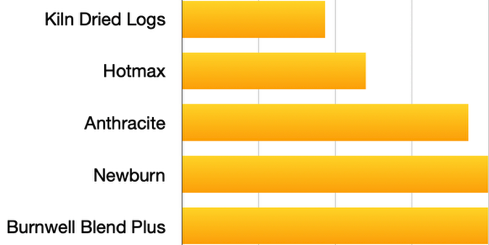
Relative Heat Output

Long Lasting
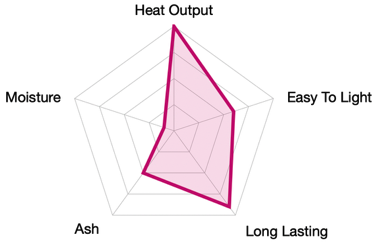
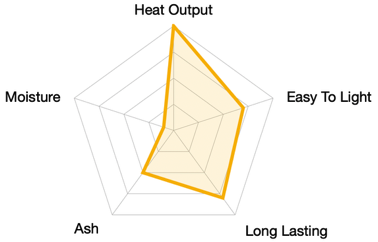
Burnwell Plus
Newburn
Anthracite

Kiln Dried Logs
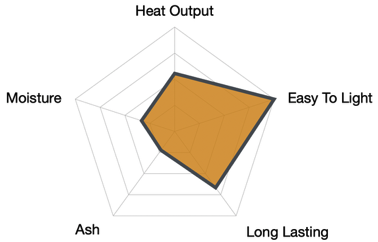
Hotmax
SOLID FUEL CHARACTERISTICS

Performance Standards: Lower Is Better
Performance Standards: Higher Is Better
NEWBURN
NEWBURN
* results independently tested 2022 by KIWA Testing Agency against HETAS performance standards.
*
*
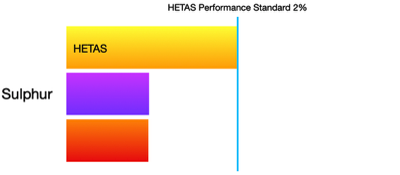
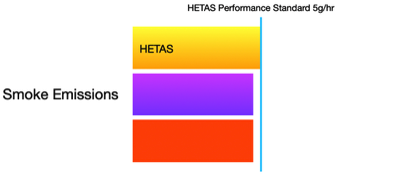
NEWBURN
NEWBURN
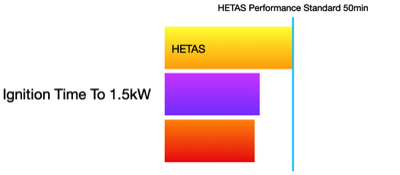
NEWBURN
B'PLUS+
B'PLUS+
B'PLUS+
*
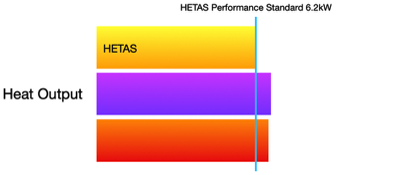
NEWBURN
B'PLUS+
NEWBURN
B'PLUS+
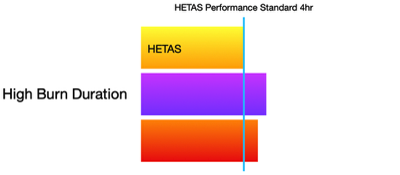

NEWBURN
B'PLUS+
NEWBURN
B'PLUS+
Looking For Local Chimney Sweep & Chimney Sweeping Services?
HETAS Qualified & HETAS Approved Chimney Sweeps In Your Area
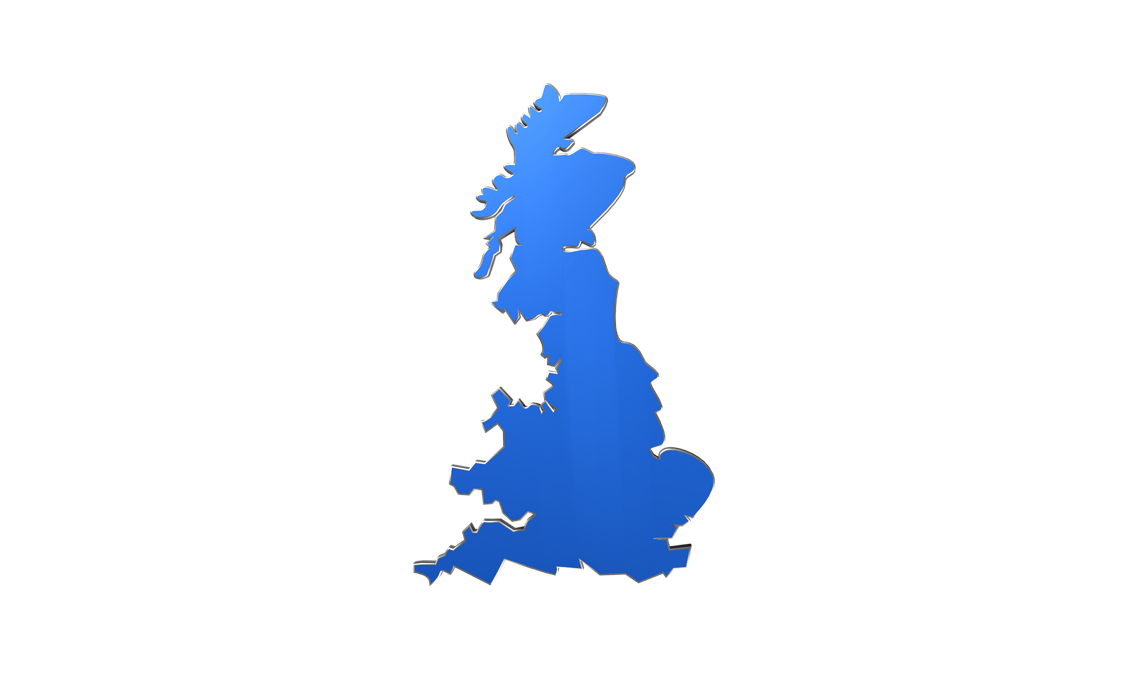
H Firkins & Sons Chimney Sweeps
https://www.firkinschimneysweeps.co.uk/
The London Chimney Sweep
Tel: 020 8886 9420
Note: Excellent and well established London and South East chimney sweeping service since 1860. Family run, experienced, professional, courteous and friendly.
Mr Soot
Manchester, Liverpool, Wigan, Stockport, Preston, Wirral Chimney Sweep
Tel: 0151 662 0331
Note: Fully registered and approved professional North West based chimney sweeping service. HETAS Approved chimney sweeps and also operate HETAS Approved chimney sweep training centre.
GD Logs / Get Swept
North East, Newcastle, Washington, Sunderland
Leeds, Huddersfield, Halifax
Tel: 0191 524 0040
Tel: 07918 592 288
Note: HETAS Approved and trained chimney sweeps. Professional and knowlegable local chimney sweeping service.
OTHER ADVICE AND SERVICES FOR YOUR STOVE
Chimney Sweeps
Chimney Sweeps Near Me
Local Chimney Sweep
Local Chimney Sweep Service
Chimney Cleaning
Chimney Cleaning Near Me
No doubt that if you have a stove or open fire or solid fuel cooker, you will be requiring chimney cleaning services, chimney sweeping services or some form of stove and fire maintenance services. After all, its not all burn burn burn! It pays dividends to look after your appliance to ensure you continue to have an efficient, clean and safe burning appliance and system. We tend to use the summer down time to have our home appliances regularly tested so that we know they are up to scratch for when the autumn and winter burning season starts. There are many good quality and professional chimney sweeping services around the counrty and operating locally. Below are a few examples of professional and HETAS Approved chimney sweep services that may be in your local area.